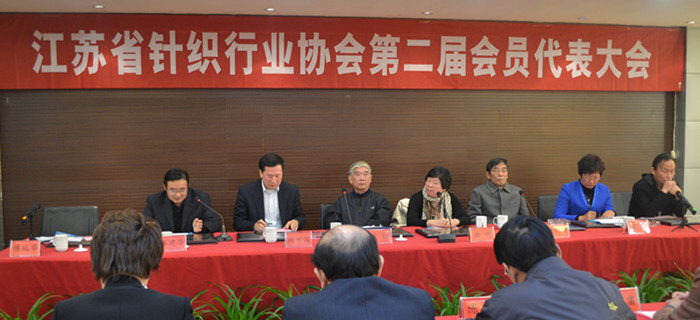The Swedish furniture giant IKEA is undoubtedly a sales genius. Consumers around the world are buying, shipping and assembling these flat-packed Swedish-style home furnishings.
The number of countries with IKEA stores in the world is larger than that of retail giants such as Wal-Mart, Carrefour and Toys R Us. China is the fastest growing market for IKEA in the world. Currently, there are 18 IKEA stores in China, 8 of which are among the top ten in the world.

At present, the IKEA Group has 318 self-operated stores and about 50 franchise stores. In fiscal year 2014, sales of 28.7 billion euros (approximately 195.2 billion yuan) were completed, which was more than double its 2005 fiscal year. By 2020, the number of IKEA stores will expand to about 500, and sales will reach 50 billion euros (about 335.4 billion yuan). The growing middle class in emerging markets such as China and India is the key to IKEA's ambition.
The foundation of the IKEA model is large-scale production, which can lower prices to suppliers and then sell goods to consumers at lower prices. Every 10 seconds, IKEA can sell a classic Billy bookshelf. More stores means more production, which guarantees more room for price control. Last year, the price of IKEA goods dropped by an average of one percentage point.
Dedicated to make consumers wear more comfortable and healthier fashion underwear brand city beauty has held e-commerce platform launch conference. This measure also marks the urban beauty to break through the existing model of physical retail enterprises to enter the e-commerce market, to open a new channel of e-commerce platform through a unique perspective of "omni-channel member marketing", through a unique perspective of the online refueling line, as a real retail enterprise "Touch net" provides a new idea.

The conference explained the concept of health, fashion, innovation, fashion, and technology of the urban beauty and adhered to the corporate culture of “service and responsibility”. In the eyes of urban beauty, e-commerce in the underwear industry must be different from the current e-commerce platform. In addition to the purchase of underwear to meet the visual enjoyment, consumers pay more attention to wearing comfort, underwear, consumer demand can not be simply through the e-commerce means to be effectively satisfied.
Zheng Yaonan, chairman and president of City Beauty, stated that “stores are the root of the survival and development of retail companies, and e-commerce is actually a necessary supplement for physical sales terminals. Stores should not be a free fitting room for online sales. We design e-commerce. The model is an online platform based on store services, and it is a new business opportunity for nourishing and complementing offline stores.This integrated marketing strategy not only makes good use of online marketing platforms, but also fully protects the interests of physical stores, and it is necessary to achieve a win-win situation. The development road of interaction.” Guangdong Urban Beauty Industrial Co., Ltd. is a modern large-scale underwear brand operation group integrating research and development, production, warehousing, logistics, sales and operation. It owns “City Fun Pop”, “City Urban Silk”, and “City "Feng Shang" and other well-known brands, products include bra, underwear, home service, body sculpting, warm clothing, socks, underwear accessories and other types of nearly 10,000 kinds of styles.
The Internet 1.0 period is the era of the Internet. It is the era of e-commerce. Only Internet companies can play. The traditional industry and the Internet are competing to some extent. With the development of Internet technology and people's understanding of the value of the Internet, the Internet 2.0 era is coming. . In the so-called Internet 2.0 era, there are three obvious trends: 1. Socialization trend, 2. Mobile Internet trend, 3. Big data trend. In the 2.0 period, the Internet was open, and traditional enterprises could play, and even act as disruptors. How do traditional companies apply these three trends to do their own user research and embody Internet thinking in the business operations? We want to focus on communicating with everyone.

When the level of development of the Internet is not high, traditional enterprises define target consumers to adopt methods that are often limited to geographical attributes, demographic attributes, and social attributes, such as the northern market, young people aged 18 to 25, and high-income white-collar markets, but in the Internet With a highly mature environment today, the way companies define their target population can vary greatly. Reese, Gao Fushuai, and Bai Fumei are all ways people define a group of specific people in the Internet. They can exist anywhere and can be different. In the same age group, they share the same lifestyle and values.
In the Internet age, companies can differentiate their own target audiences more precisely than before. They can be more precise and can be more closely related to marketing. The segmented ethnic characteristics are more perceptible, more implementable, and the dissemination and communication of ethnic groups is also possible. It will be more accurate.
In recent years, the children's wear market in China has maintained steady growth. According to the 2012-2015 Children's Wear Industry Report released by the National Bureau of Statistics, the annual growth rate of the children's clothing industry's output value is 25% to 30%. It is estimated that by 2015, the market capacity of China's infant clothing and cotton goods and daily necessities will reach 227.98 billion yuan. The new policy of Second Child implemented since 2014 has brought new opportunities to the children's wear market.
In the traditional thinking of children's wear marketing, the basis for dividing the children’s wear market is often “baby, children, children, children, and children”, with children’s age as a dimension; or “low-end → middle-end → high-end”. The consumer's ability to pay is one dimension. These two traditional division dimensions are common in many industries, but the drawbacks of this division are also very obvious. First, children's clothing consumption is from small to large, and one brand has a complete opportunity to achieve comprehensiveness from baby to child. Coverage; Secondly, even high-end consumers, their needs are diverse, simply positioning high-end and can not meet the full needs of the high-end market. Therefore, it can be seen that such subdivided methods are not grounded in the marketing guidance of enterprises and are difficult to operate.
Urban beauty opens new e-commerce model
Dedicated to make consumers wear more comfortable and healthier fashion underwear brand city beauty has held e-commerce platform launch conference.






